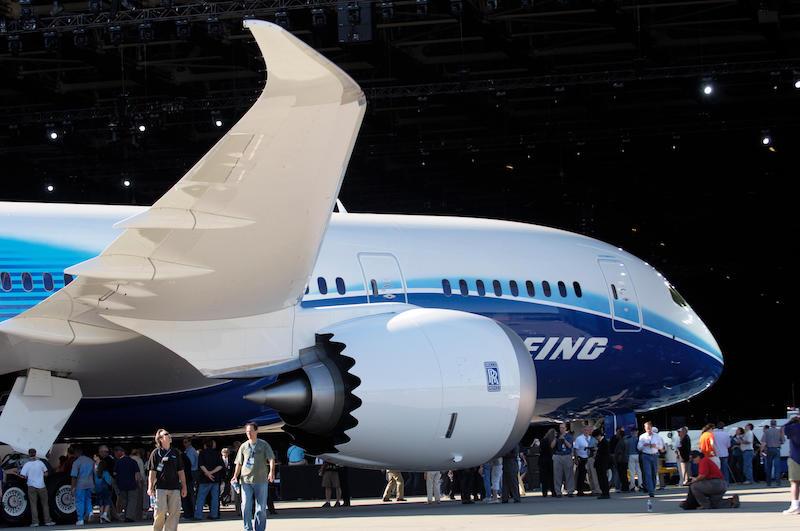
The first Boeing 787-8 rolls out equipped with Rolls-Royce Trent 1000 in 2007.
The nature of two engine options is that one will inevitably find favor over the over. In the case of the Boeing 787 this happened early on with the GEnx-1b racking up orders at a faster pace, despite the Rolls-Royce Trent 1000 being the program’s launch engine. GE benefited from being the choice of U.S. airlines and could also offer commonality for operators of the 747-8.
By 2011, when the 787 entered service, the gross order balance was already weighted 2:1 in GE’s favor. At the end of 2016, the year that blade durability issues with the Trent 1000 emerged, the 2:1 order ratio was steady. In 2017, Rolls-Royce admitted that the durability issues extended to up to 500 engines—or almost all the Trent 1000-equipped 787s in service at the time.
Since then, the engine-maker has rolled out a series of performance-improvement packages. However, component weaknesses and premature wear issues have persisted. Fast-forward to the 2024 IATA Annual General Meeting and airline CEOs are still complaining that their Trent 1000-powered 787s are not spending enough time in the air.
From 2018 onward, Trent 1000 orders have slowed while the GEnx has raced ahead. In the 2018-23 period, 677 GEnx-equipped 787s were ordered versus 71 Trent 1000-equipped 787s. That time frame covers the pandemic, when orders fell, but also the return of demand for twin-aisles, with GE largely the beneficiary of big 787 orders from the Middle East and India in 2023, when 787 orders hit a record high.
Carriers are said to be driven by a fear of missing out on production slots, which have been sliding to the right. Deliveries of the 787 have tailed off not only because of COVID but also a number of FAA-imposed production pauses caused by questions around production quality at Boeing.
Last year Aviation Week forecasted that the GEnx-equipped fleet will be more than three times the size of the Trent 1000 fleet in the early 2030s and quadruple the size in the middle of that decade. How soon this happens will depend on how quickly Boeing’s 787 production rates—which are currently at about three aircraft per month—rise, and how soon Trent 1000-equipped 787s are retired. Rolls-Royce continues to work on improvements for the engine and says it is confident it has the solutions.
Rolls-Royce is stepping up its campaign to win back 787 market share through the introduction of a long-delayed upgrade package on the Trent 1000 TEN variant—which is now its standard offering on newly built 787s. Already certified for the Trent 7000 on the Airbus A330neo, the same upgrade package was flight-tested on a 787 in late 2023.
The new turbine blade design, which boosts cooling airflow by 40% and increases blade life by reducing sustained operating temperatures by 45F, forms part of a company plan to double time-on-wing for customers. Like the Trent 7000 effort, a follow-on enhancement package planned by Rolls also promises a further 30% time-on-wing extension in 2026.
Whether this will be enough to woo back former Trent users like Air New Zealand and ANA that defected to GE or win new customers remains to be seen. CEO Tufan Erginbilgic’s radical restructuring plan for Rolls-Royce, unveiled in 2023, includes much stricter contract terms and conditions on long-term service agreement margins, which may make even the upgraded Trent 1000 engine too hard a sell.
Additional reporting by Guy Norris






